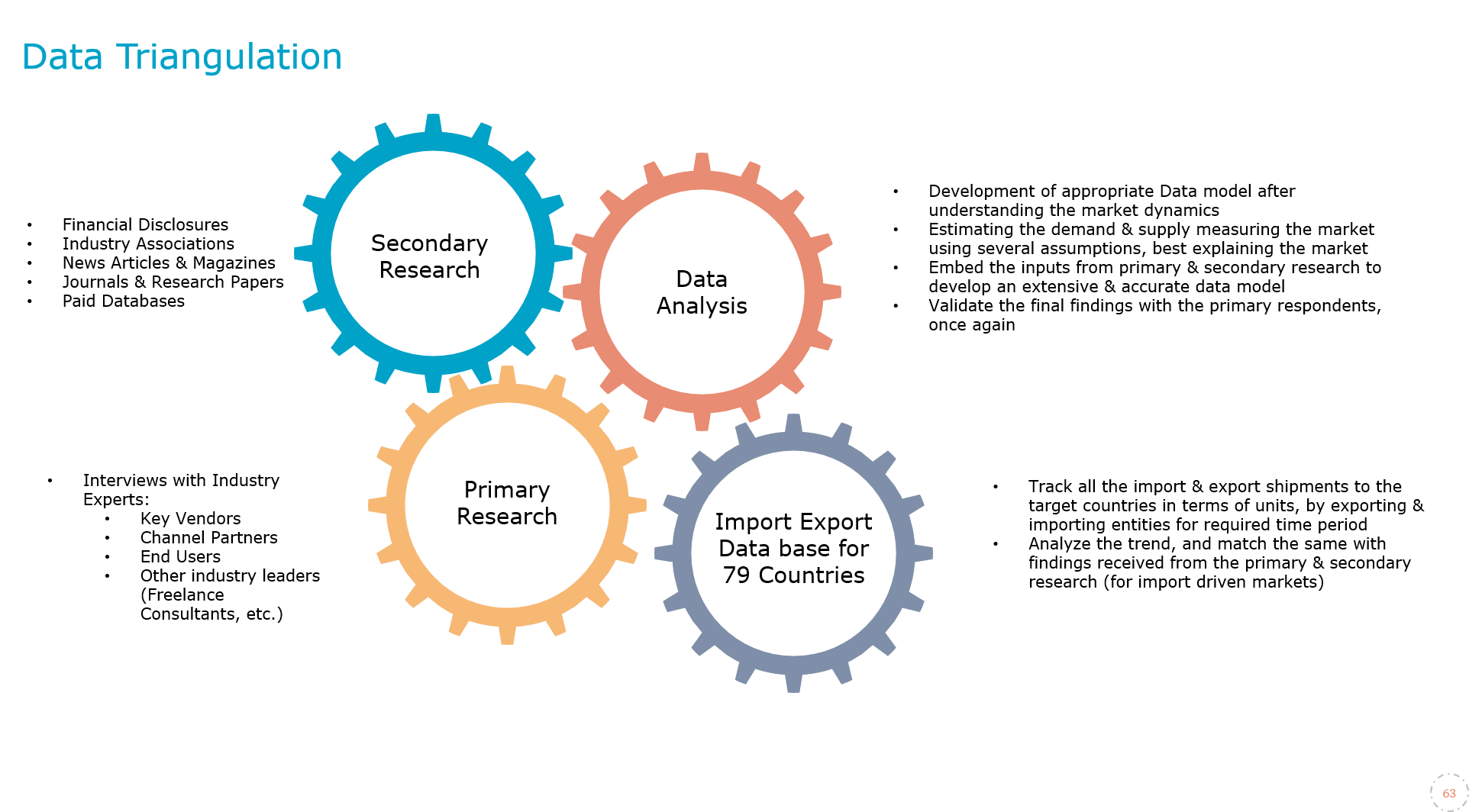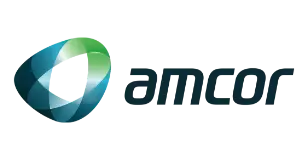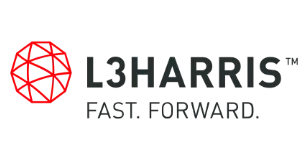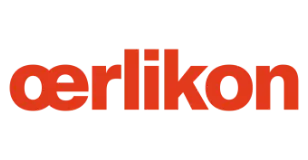
North Africa Air Conditioner Market Research Report: Forecast (2025-2030)
North Africa Air Conditioner Market - By Product Type (Split Air Conditioners, Window Air Conditioners, Cassette Air Conditioners, Floor Standing Air Conditioners, Portable Air Con...ditioners, Packaged Air Conditioners, Others), By Distribution Channel (Direct Sales, Supermarkets/Hypermarkets, Specialty Stores, Online Retail, Others), By End-User (Residential, Commercial) and Others Read more
- Environment
- May 2025
- Pages 154
- Report Format: PDF, Excel, PPT
Market Insights & Analysis: North Africa Air Conditioner Market (2025-30):
The North Africa Air Conditioner Market size was valued at around USD 2.8 billion in 2024 and is expected to reach USD 3.8 billion in 2030. Along with this, the market is estimated to grow at a CAGR of around 5.23% during the forecast period, i.e., 2025-30. The key driver for the market growth is the hot & arid climates in the region, which create a strong demand for air conditioners across both residential & non-residential sectors. In addition, the ever-increasing infrastructural development activities due to rapid urbanization and economic growth are other significant aspects driving the market.
| Report Coverage | Details |
|---|---|
| Historical Years | 2020–23 |
| Forecast Years | 2025–30 |
| Market Value in 2024 | USD 2.8 Billion |
| Market Value by 2030 | USD 3.8 Billion |
| CAGR (2025–30) | 5.23% |
| Leading Country | Egypt |
| Top Key Players | LG Electronics, Samsung Electronics, Daikin Industries, Ltd, Gree Electrical Appliance Inc, Carrier Corporation, Hitachi Ltd, Sharp Corporation, Panasonic Corporation, York, and Others |
| Segmentation | By Product Type (Split Air Conditioners, Window Air Conditioners, Cassette Air Conditioners, Floor Standing Air Conditioners, Portable Air Conditioners, Packaged Air Conditioners, Others), By Distribution Channel (Direct Sales, Supermarkets/Hypermarkets, Specialty Stores, Online Retail, Others), By End-User (Residential, Commercial) and Others |
| Key Report Highlights |
|
*Boost strategic growth with in-depth market analysis - Get a free sample preview today!
The air conditioner market in North Africa is dominated strongly by local manufacturers, mainly due to a 'high custom duty' on imported products, i.e., around 40% of the product value. Most major international air conditioner brands have national partners in a few North Africa countries that either manufacture their technology, assemble the equipment, or simply just supply & import the technologies, especially for small AC equipment like split systems, cooling coils, fans, & AHUs. Besides, countries like Egypt also has a local presence of Daikin & Samsung.
The amendment provides for the inclusion of HFCs (Hydrofluorocarbons) used in some refrigeration & air-conditioning devices within the schedules of substances subject to the control of the Montreal Protocol, coupled with the gradual reduction of the consumption of these substances as these are potent greenhouse gases that cause global warming, especially since there exist several environmentally-friendly alternatives that achieve efficiency & minimize energy consumption. Because of this, many AC manufacturers have started working on bringing technological advancements to their product offerings, including energy-efficient systems, smart thermostats, & eco-friendly refrigerants, which would result in enhanced efficiency, cost-effectiveness, & environmental sustainability of AC solutions, making them more attractive to consumers and, consequently, spurring growth in the North Africa Air Conditioner Market over the forecast years.
North Africa Air Conditioner Market Driver:
Hot Arid Climate and Rising Temperature – The significant driver for air conditioner demand in North Africa is the region's persistently hot and arid climate, which creates a strong need for cooling solutions in both residential and commercial sectors. Increasing urbanization, rising disposable incomes, and expanding infrastructure further amplify this demand, making air conditioning a necessity rather than a luxury in many parts of the world.

North Africa Air Conditioner Market Opportunity:
Growing Need for Energy-Efficient Air Conditioners –North Africa is witnessing rising energy prices, i.e., compelling end-users to reduce electricity consumption and achieve energy cost savings. Moreover, in order to reduce carbon footprints, governments are taking active measures toward promoting sustainability practices and offering tax rebates & subsidies to end-users on the purchase of energy-efficient products. Hence, the notably increasing demand for environment-friendly & energy-efficient AC solutions in the region is a promising growth opportunity for the companies operating in the North Africa Air Conditioner Market to widen their consumer base and generate significant revenue in the future.
North Africa Air Conditioner Market Challenge:
High Cost and Unreliable Power Supply – The biggest challenge facing the North Africa air conditioner market is the high initial and operational costs of air conditioning units, which makes them less accessible to low-income populations. Additionally, unreliable electricity supply in several parts of the region can hamper both adoption and effective use of air conditioners, as these systems require consistent and stable power.
North Africa Air Conditioner Market Trend:
Rising Demand for Energy-Efficient and Eco-Friendly Air Conditioners – With increasing energy prices and a growing emphasis on sustainability, there is a significant opportunity for manufacturers to offer energy-efficient and environmentally friendly air conditioning solutions. Government incentives, such as tax rebates and subsidies for energy-efficient products, further support this trend, presenting a promising avenue for companies to expand their market share and address both environmental and cost concern.
North Africa Air Conditioner Market (2025-30): Segmentation Analysis
The North Africa Air Conditioner Market study of MarkNtel Advisors evaluates & highlights the major trends & influencing factors in each segment & includes predictions for the period 2025–2030 at the regional level. Based on the analysis, the market has been further classified as:
Based on Product Type:
- Split Air Conditioners
- Window Air Conditioners
- Cassette Air Conditioners
- Floor Standing Air Conditioners
- Portable Air Conditioners
- Packaged Air Conditioners
- Others
Among all, single split systems strongly dominate the North Africa Air Conditioner Market and are adopted mainly by residential buildings & some small commercial spaces like office & retail buildings, owing to their cost-effectiveness and ease of installation, which makes them more convenient for consumers, especially in countries where professional installation services may be limited or expensive. Moreover, the significantly rising number of housing development projects and the expansion of the hospitality sector are other crucial factors projected to accelerate the market growth for split air conditioners in North Africa over the coming years.
Based on End User:
- Residential
- Commercial
- Industrial
- Institutional
The residential sector dominates the North Africa Air Conditioner Market, backed by economic growth, extreme weather conditions, and new housing development projects, the commercial sector is projected to create notable revenue growth for the market during 2025-30. It owes to the rapidly expanding construction sector on account of increasing government investments in infrastructure development.
The recent construction boom, accompanied by the development of new & large cities, is creating market growth opportunities for air conditioners in the commercial sector, especially for DC (District Cooling), i.e., starting to be adopted. In addition, various ongoing projects associated with the construction of shopping malls, supermarkets, healthcare facilities, hotels, & educational infrastructure, among others, coupled with the growing tourism sector, would further benefit the North Africa Air Conditioner Market growth across the commercial sector in the years to come.
North Africa Air Conditioner Market (2025-30): Regional Projection
Geographically, the North Africa Air Conditioner Market expands across:
- Egypt
- Algeria
- Morocco
- Tunisia
- Libya
- Sudan
- Rest of North Africa
Of all countries in North Africa, Egypt is the largest Air Conditioner Market, owing to the strong government focus on infrastructure development as a key driving force for urban growth & economic stability, coupled with massive investments in the New Administrative Capital, i.e., one of the economic development projects and a part of Egypt Vision 2030, and the onset of the construction of the Middle East's largest private integrated medical city project, CAPITALMED, in Badr City on the east of Cairo. Like this, many mega projects have been planned in Egypt for the coming years due to the New Administrative Capital's development, i.e., creating opportunities for the production & sales of air conditioning solutions in the country.
More & more building owners are willing to make their facilities more cost-efficient & environmentally friendly by adopting the latest air conditioning solutions like thermally driven units to increase efficiency and reduce utility costs while overcoming the challenges of temperature & air quality conditions. The air conditioner market in Egypt is poised for continued expansion in the coming years, owing to the mounting implementation of district cooling in several projects, coupled with the transition toward sustainable cooling technologies & natural refrigerants, which will create opportunities for manufacturers to bring more energy-efficient products to the market.
North Africa Air Conditioner Industry Recent Development:
- 2025: Daikin, the leading innovator and provider of advanced, high-quality air conditioning, heating, ventilation and refrigeration (HVAC-R) products and solutions for residential, commercial and industrial applications, has officially launched its new and upgraded head office in New Cairo City, Egypt. The major aim behind this initiative is driving innovation in the HVAC-R industry and meeting the growing demand for energy-efficient air conditioning solutions in the region
- 2024: LG and Raya Electric established a collaboration to produce LG-branded air conditioner in Egypt.
Gain a Competitive Edge with Our North Africa Air Conditioner Market Report
- North Africa Air Conditioner Market Report by MarkNtel Advisors provides a detailed & thorough analysis of market size & share, growth rate, competitive landscape, and key players. This comprehensive analysis helps businesses gain a holistic understanding of the market dynamics & make informed decisions.
- This report also highlights current market trends & future projections, allowing businesses to identify emerging opportunities & potential challenges. By understanding market forecasts, companies can align their strategies & stay ahead of the competition.
- North Africa Air Conditioner Market Report aids in assessing & mitigating risks associated with entering or operating in the market. By understanding market dynamics, regulatory frameworks, and potential challenges, businesses can develop strategies to minimize risks & optimize their operations.
*Reports Delivery Format - Market research studies from MarkNtel Advisors are offered in PDF, Excel and PowerPoint formats. Within 24 hours of the payment being successfully received, the report will be sent to your email address.
Frequently Asked Questions
- Market Segmentation
- Research Methodology
- Product Definition
- Research Process
- Assumptions
- Executive Summary
- North Africa Air Conditioner Market Trends & Development
- North Africa Air Conditioner Market Industry Dynamics
- Drivers
- Challenges
- North Africa Air Conditioner Market Hotspot & Opportunities
- North Africa Air Conditioner Market Policies, Regulations, Product Standards
- North Africa Air Conditioner Market Outlook, 2020-2030
- Market Size & Analysis
- By Revenues (USD Million)
- By Volume (Million Units)
- Market Share & Analysis
- By Product Type
- Split Air Conditioners – Market Size & Forecast 2020–2030, USD Million & Million Units
- Window Air Conditioners – Market Size & Forecast 2020–2030, USD Million & Million Units
- Cassette Air Conditioners – Market Size & Forecast 2020–2030, USD Million & Million Units
- Floor Standing Air Conditioners – Market Size & Forecast 2020–2030, USD Million & Million Units
- Portable Air Conditioners – Market Size & Forecast 2020–2030, USD Million & Million Units
- Packaged Air Conditioners – Market Size & Forecast 2020–2030, USD Million & Million Units
- Others – Market Size & Forecast 2020–2030, USD Million & Million Units
- By Distribution Channel
- Direct Sales – Market Size & Forecast 2020–2030, USD Million & Million Units
- Supermarkets/Hypermarkets – Market Size & Forecast 2020–2030, USD Million & Million Units
- Specialty Stores – Market Size & Forecast 2020–2030, USD Million & Million Units
- Online Retail – Market Size & Forecast 2020–2030, USD Million & Million Units
- Others – Market Size & Forecast 2020–2030, USD Million & Million Units
- By End-User
- Residential – Market Size & Forecast 2020–2030, USD Million & Million Units
- Commercial – Market Size & Forecast 2020–2030, USD Million & Million Units
- Industrial – Market Size & Forecast 2020–2030, USD Million & Million Units
- Institutional – Market Size & Forecast 2020–2030, USD Million & Million Units
- By Region
- Egypt – Market Size & Forecast 2020–2030, USD Million & Million Units
- Algeria – Market Size & Forecast 2020–2030, USD Million & Million Units
- Morocco – Market Size & Forecast 2020–2030, USD Million & Million Units
- Tunisia – Market Size & Forecast 2020–2030, USD Million & Million Units
- Libya – Market Size & Forecast 2020–2030, USD Million & Million Units
- Sudan – Market Size & Forecast 2020–2030, USD Million & Million Units
- Rest of North Africa – Market Size & Forecast 2020–2030, USD Million & Million Units
- By Company
- Competition Characteristics
- Company Share & Analysis
- By Product Type
- Market Size & Analysis
- Egypt Air Conditioner Market Outlook, 2025–2030
- Market Size & Analysis
- By Revenue (USD Million)
- By Volume (Million Units)
- Market Share & Analysis
- By Product Type – Market Size & Forecast 2020–2030, USD Million & Million Units
- By Distribution Channel – Market Size & Forecast 2020–2030, USD Million & Million Units
- By End-User – Market Size & Forecast 2020–2030, USD Million & Million Units
- Market Size & Analysis
- Algeria Air Conditioner Market Outlook, 2025–2030
- Market Size & Analysis
- By Revenue (USD Million)
- By Volume (Million Units)
- Market Share & Analysis
- By Product Type – Market Size & Forecast 2020–2030, USD Million & Million Units
- By Distribution Channel – Market Size & Forecast 2020–2030, USD Million & Million Units
- By End-User – Market Size & Forecast 2020–2030, USD Million & Million Units
- Market Size & Analysis
- Morocco Air Conditioner Market Outlook, 2025–2030
- Market Size & Analysis
- By Revenue (USD Million)
- By Volume (Million Units)
- Market Share & Analysis
- By Product Type – Market Size & Forecast 2020–2030, USD Million & Million Units
- By Distribution Channel – Market Size & Forecast 2020–2030, USD Million & Million Units
- By End-User – Market Size & Forecast 2020–2030, USD Million & Million Units
- Market Size & Analysis
- Tunisia Air Conditioner Market Outlook, 2025–2030
- Market Size & Analysis
- By Revenue (USD Million)
- By Volume (Million Units)
- Market Share & Analysis
- By Product Type – Market Size & Forecast 2020–2030, USD Million & Million Units
- By Distribution Channel – Market Size & Forecast 2020–2030, USD Million & Million Units
- By End-User – Market Size & Forecast 2020–2030, USD Million & Million Units
- Market Size & Analysis
- Libya Air Conditioner Market Outlook, 2025–2030
- Market Size & Analysis
- By Revenue (USD Million)
- By Volume (Million Units)
- Market Share & Analysis
- By Product Type – Market Size & Forecast 2020–2030, USD Million & Million Units
- By Distribution Channel – Market Size & Forecast 2020–2030, USD Million & Million Units
- By End-User – Market Size & Forecast 2020–2030, USD Million & Million Units
- Market Size & Analysis
- Sudan Air Conditioner Market Outlook, 2025–2030
- Market Size & Analysis
- By Revenue (USD Million)
- By Volume (Million Units)
- Market Share & Analysis
- By Product Type – Market Size & Forecast 2020–2030, USD Million & Million Units
- By Distribution Channel – Market Size & Forecast 2020–2030, USD Million & Million Units
- By End-User – Market Size & Forecast 2020–2030, USD Million & Million Units
- Market Size & Analysis
- Rest of North Africa Air Conditioner Market Outlook, 2025–2030
- Market Size & Analysis
- By Revenue (USD Million)
- By Volume (Million Units)
- Market Share & Analysis
- By Product Type – Market Size & Forecast 2020–2030, USD Million & Million Units
- By Distribution Channel – Market Size & Forecast 2020–2030, USD Million & Million Units
- By End-User – Market Size & Forecast 2020–2030, USD Million & Million Units
- Market Size & Analysis
- North Africa Air Conditioner Market Key Strategic Imperatives for Growth & Success
- Competitive Outlook
- Company Profiles
- LG Electronics
- Business Description
- Product Portfolio
- Strategic Alliances or Partnerships
- Recent Developments
- Financial Details
- Others
- LG Electronics
- Samsung Electronics
- Business Description
- Product Portfolio
- Strategic Alliances or Partnerships
- Recent Developments
- Financial Details
- Others
- Daikin Industries, Ltd.
- Business Description
- Product Portfolio
- Strategic Alliances or Partnerships
- Recent Developments
- Financial Details
- Others
- Gree Electrical Appliance Inc.
- Business Description
- Product Portfolio
- Strategic Alliances or Partnerships
- Recent Developments
- Financial Details
- Others
- Carrier Corporation
- Business Description
- Product Portfolio
- Strategic Alliances or Partnerships
- Recent Developments
- Financial Details
- Others
- Hitachi Ltd.
- Business Description
- Product Portfolio
- Strategic Alliances or Partnerships
- Recent Developments
- Financial Details
- Others
- Sharp Corporation
- Business Description
- Product Portfolio
- Strategic Alliances or Partnerships
- Recent Developments
- Financial Details
- Others
- Panasonic Corporation
- Business Description
- Product Portfolio
- Strategic Alliances or Partnerships
- Recent Developments
- Financial Details
- Others
- York
- Business Description
- Product Portfolio
- Strategic Alliances or Partnerships
- Recent Developments
- Financial Details
- Others
- Others
- Company Profiles
- Disclaimer
MarkNtel Advisors follows a robust and iterative research methodology designed to ensure maximum accuracy and minimize deviation in market estimates and forecasts. Our approach combines both bottom-up and top-down techniques to effectively segment and quantify various aspects of the market. A consistent feature across all our research reports is data triangulation, which examines the market from three distinct perspectives to validate findings. Key components of our research process include:
1. Scope & Research Design At the outset, MarkNtel Advisors define the research objectives and formulate pertinent questions. This phase involves determining the type of research—qualitative or quantitative—and designing a methodology that outlines data collection methods, target demographics, and analytical tools. They also establish timelines and budgets to ensure the research aligns with client goals.
2. Sample Selection and Data Collection In this stage, the firm identifies the target audience and determines the appropriate sample size to ensure representativeness. They employ various sampling methods, such as random or stratified sampling, based on the research objectives. Data collection is carried out using tools like surveys, interviews, and observations, ensuring the gathered data is reliable and relevant.
3. Data Analysis and Validation Once data is collected, MarkNtel Advisors undertake a rigorous analysis process. This includes cleaning the data to remove inconsistencies, employing statistical software for quantitative analysis, and thematic analysis for qualitative data. Validation steps are taken to ensure the accuracy and reliability of the findings, minimizing biases and errors.

4. Data Forecast and FinalizationThe final phase involves forecasting future market trends based on the analyzed data. MarkNtel Advisors utilize predictive modeling and time series analysis to anticipate market behaviors. The insights are then compiled into comprehensive reports, featuring visual aids like charts and graphs, and include strategic recommendations to inform client decision-making









